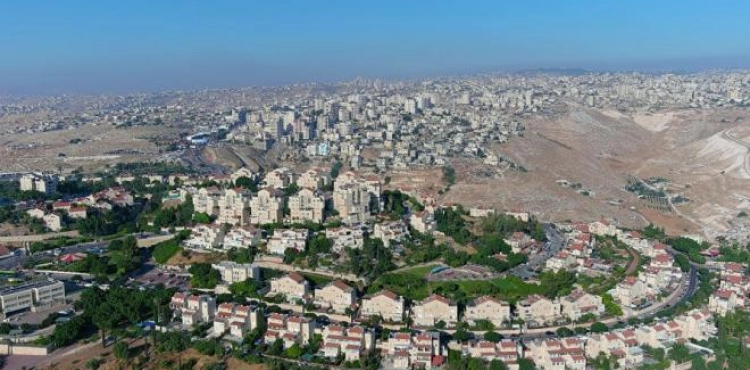The Israeli occupation authorities announced that they had confiscated hundreds of dunums of the area north of Jerusalem, in preparation for turning it into an entertainment center.
Whereas, the Local Committee for Planning and Building in the Occupation Municipality in Jerusalem approved the plan for the "Nahal Zimri Natural Park" settlement on the lands of Beit Hanina and Hazmah, and parts of the lands of Jaba, north of Jerusalem, near Pisgat Ze´ev and Neve Yaqoub.
The occupation municipality claimed that until two years ago, the "Nahal Al-Zimri" area in northern Jerusalem was a wild natural site, including about 200 deer, rocky rabbits and other animals, but it was neglected, and it became a site for piracy to dump waste, and contamination of the natural site near Pisgat Ze´ev and Neve Yaqoub, and confirmed that after the settlers went to the two settlements, the Jerusalem municipality decided to rehabilitate the park in cooperation with the Society for the Protection of Nature and declared it an urban site.
It is noteworthy that more than two years ago, archaeological remains from the Abbasid and Umayyad periods and an Ottoman castle were discovered in the northeast of Beit Hanina, but the Israeli antiquities authorities bulldozed them and transferred mosaic floors to the Israeli Museum in what was described at the time as the "Khirbet Zamri complex."
The remains that have been found are buildings, mills and water reservoirs dating back to the Bronze Age and the Byzantine era that have been preserved.
The municipality said that the plan refers to a division of a land in an area of ​​about 695 dunums on the eastern edge of the settlement of "Pisgat Zeev", between Gal, Rushmilevich and Dukivat streets. This plan was preceded by a plan of 2000, which defined the area as an open space for the benefit of the settlement, and a schematic plan on Gal Street identified sports fields.
Subsequently, the Department of Urban Planning prepared a policy document for the Green Organizational Structure for the northern settlements of the city.
According to the Israeli plan, large areas of confiscated Palestinian land will be allocated for this project - open spaces and communication between them through walking and cyclists such as urban ghost gardens.
The occupation municipality said that an asbestos garden, the Kidron River basin in the east of the city, will be built, so that the area will extend in the next phase to the Ghor and Ain al-Fawwar area.
The plan, which was published yesterday evening, confirmed that the park will become a center for sports and an open space in the north of the city, and a bridge will be built over the bypass street that will connect public buildings, the public park and light railways to the park.
The municipality says that "the plan provides for the preservation of a large area according to the hierarchy of preservation of areas, where most of the area is allocated to a reserved core and where there are environmental systems, next to the reserved center, an area that is moderately open to visitors and hikers will be developed, and four entrances will be built for the purpose of receiving the public." - One first from Gal Street in the settlement of Nabi Ya’akov, two south from Rachmelievi Street and Moshe Krause, and one north from Dukivat Patrol Street from Pisgat Ze´ev settlement. The main lobby will include water pools, sports fields, a study farm, a visitor center, parking lot, general building for activities Societal and trade. "












